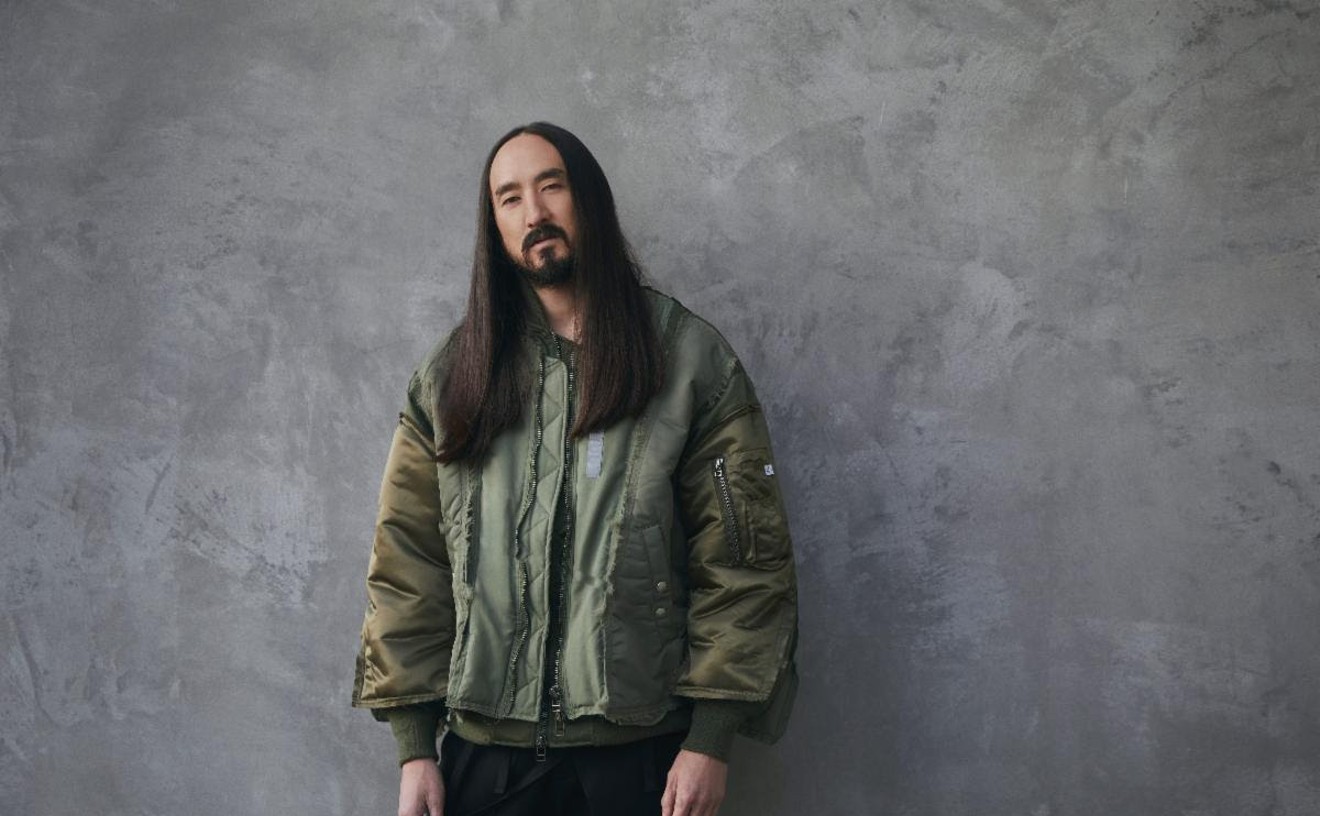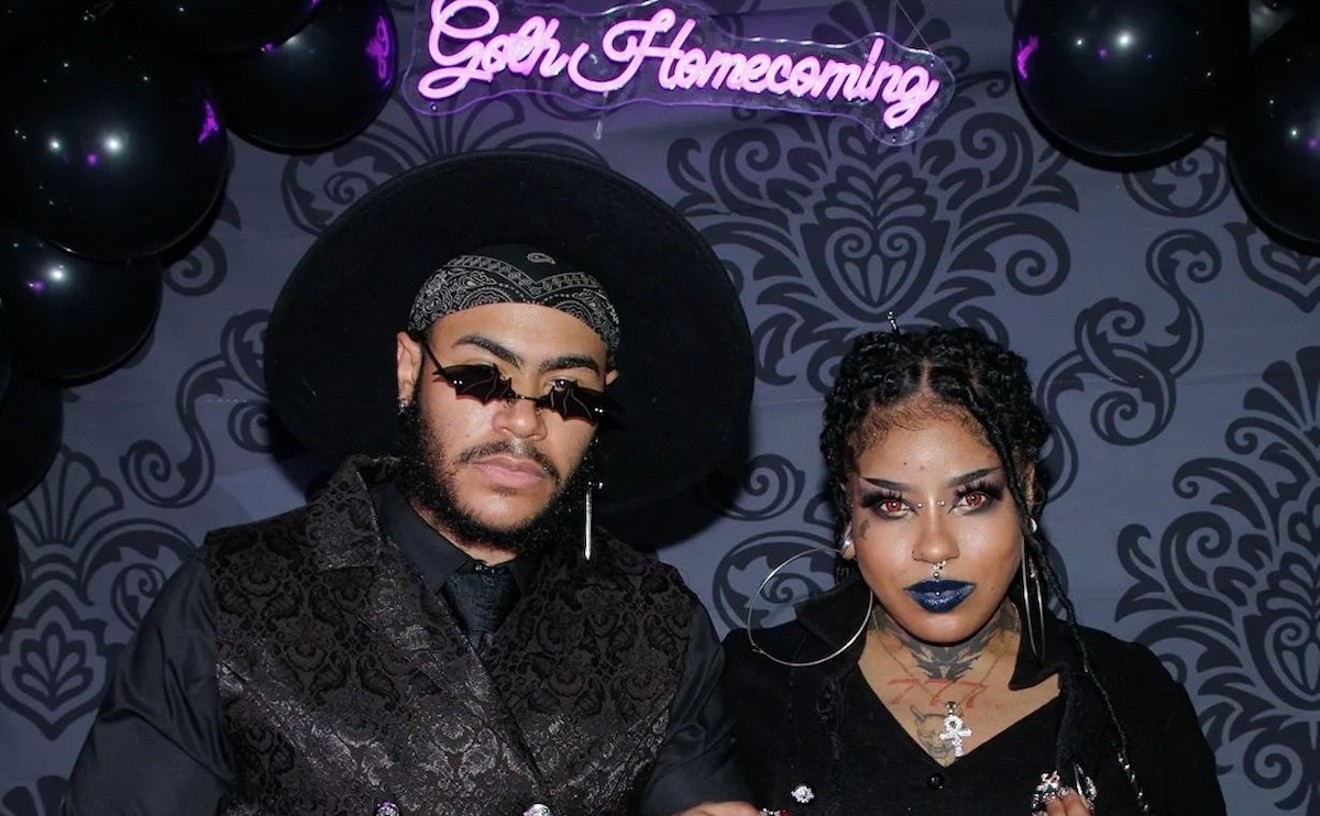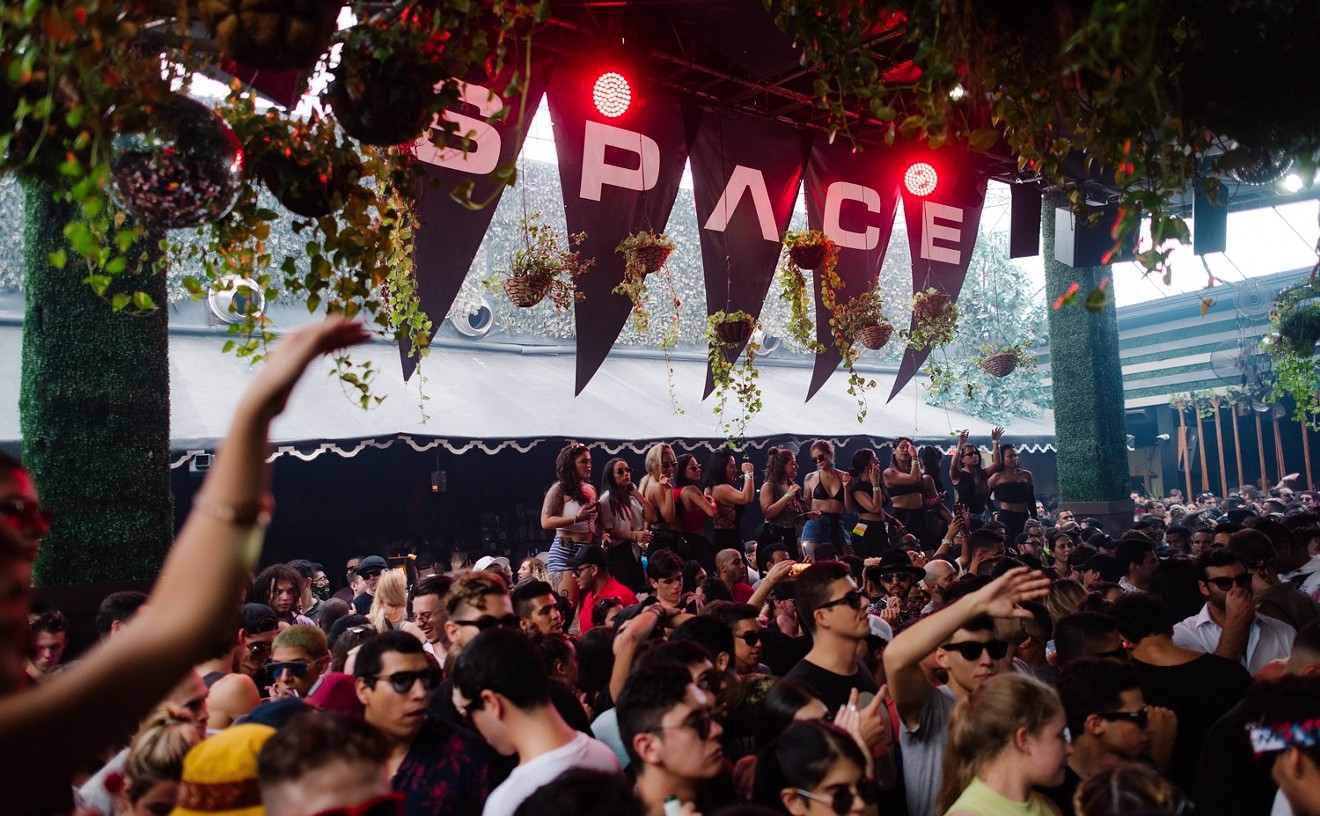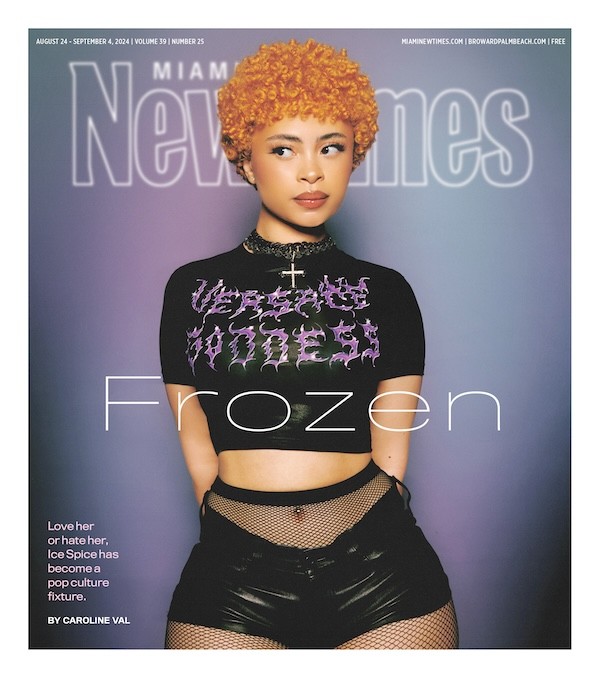This Saturday, Miami Beach plays host to a legendary figure in what has for many years been a niche genre. LTJ Bukem, arguably one of the founding fathers of drum 'n' bass, will play a set at Treehouse in Miami Beach, making him the latest high-tempo figure to visit Miami. Just over two weeks ago, during Miami Music Week, Goldie hosted a showcase for his label Metalheadz that featured fellow D&B vets Photek and Doc Scott. Andy C, the RAM Records head who sold out Wembley Stadium in 2018, played Ultra. At the very same festival, none other than Tiësto could be heard straight-up ripping D&B bangers during a mainstage set.
Especially in Miami, it seems like drum 'n' bass has never been more visible. Promoters like Jezebel have brought in notable jungle DJs like Sherelle and Tim Reaper, while the Beatcamp party, run by local DJ/promoter Shinobi, has held down D&B in South Florida for years. But if anyone thinks the sudden interest in the genre is just that — sudden — they'd be sorely mistaken. Drum 'n' bass, as well as its sister genre jungle and other 160-bpm music scenes like Chicago footwork and breakcore, have existed and thrived for years in the underground. They didn't go away — people simply stopped paying attention.
Drum 'n' bass emerged from the London rave scene in the early 1990s before gaining mass popularity in the middle of the decade. For years, producers like Goldie and Foul Play had been making dark, sample-heavy techno tracks known as "breakbeat hardcore" for their incessant use of drum samples like the amen break. As early as 1991, LTJ Bukem, born Daniel Williamson, had been conceptualizing his take on the genre on tracks like "Demon's Theme," which he broke down for the drum 'n' bass oral history book Who Say Reload.
"I wanted it to be a track with two stories, one being melancholic and lush, with beautiful strings and generally rolling, the other being quite ravey with that stabby midsection, before ending up where we began towards the end of the track," Williamson, who was influenced by jazz and soul as much as rave music, told the book's authors Paul Terzulli and Eddie Otchere. "I think I achieved that, and it's funny because that's how I've always viewed my DJ sets from then right up until now: a mix of rough and smooth."
Featuring explicit references to "progressive" house tracks like 808 State's "Pacific," the blueprint established by "Demon's Theme" would prove to be a guiding light as tempos got faster and faster, peaking at 160 beats per minute, and reggae entered the hardcore lexicon in the form of dub sirens and ragga vocals. Jungle, as the genre became known, entered the mainstream in the UK in 1994 with tracks like M-Beat and General Levy's "Incredible." It was considered street music, the UK equivalent to gangsta rap, and reactions in the press and the public were often sensational. In reaction, a handful of producers and DJs began to develop the "ambient jungle" that Bukem had pioneered. Continuing the formula on tracks like "Atlantis" and "Horizons," Williamson also started a club night, Speed, with resident DJs Fabio, Kemistry, and Storm and attracted interest from the likes of Photek, Doc Scott, and Marcus Intalex.
"Ambient jungle was partly the result of an emerging generation gap within breakbeat," Simon Reynolds argued in his seminal rave history Energy Flash. "While younger producers still oriented their music towards DJs and dancers, the older hardcore artists were now starting to make music that worked better at home than on the dancefloor." For others, the appeal was that the new strain of jungle had that mix of "rough and smooth," as Williamson put it. According to Ben Murphy and Carl Loben in their drum 'n' bass history Renegade Snares, "Bukem's ingenious idea worked not because it lulled the listener into a blissful stupor, but because it existed between two states, at once dreamlike and rhythmically rugged; dancefloor-ready yet stimulating to the mind."
Soon, as full-length records from 4hero, Goldie, and A Guy Called Gerald earned ambient jungle attention from the press and major labels, this new style earned itself a new, de-reggaefied name: drum 'n' bass. Peaking in 1996, the genre would go in several ways by the decade's end. On one side, producers such as Roni Size would gravitate towards jazzier, sophisticated sounds, while Fabio would further develop the ambient sound on his Liquid Funk compilations. On the other, Source Direct and Photek would take influence from techno, creating darker, heavier tracks known as "techstep." And in the middle, the Warp Records/Planet Mu set, including Aphex Twin, Squarepusher, and Venetian Snares, were doubling down on drum samples, developing breakcore. The ambient and jazz sound fell out of trend, and for the next decade, drum 'n' bass would be dominated by the tougher, producer-driven, metal-adjacent sound typified by Bad Company's "The Nine" and, eventually, festival EDM pioneers like Pendulum and Noisia.
In the mid-2010s, however, a shift began as the possibilities for high-tempo dance music began to expand. In 2013 and 2014, as America finally woke up to electronic music in earnest thanks to Skrillex and the EDM boom, three albums with three different sounds were released that influenced a new generation of music fans. Machinedrum's concept album Vapor City mixed ambient jungle with beat music and alt-R&B; Machine Girl's WLFGRL revolutionized breakcore with a mélange of anime samples, gabber beats, rave synths, and breaks; and most crucial of all, DJ Rashad's Double Cup became the seminal Chicago footwork album, spawning an international network of producers and DJ collectives from Battle Train in Tokyo to JukeBounceWerk in the U.S. dedicated to the unique, ghetto house-influenced sound.
Meanwhile, in the UK and Europe, jungle was re-emerging. Just as millennials in the U.S. were making music inspired by old memories of breakbeats in their Toonami commercial bumpers and PlayStation soundtracks, a new generation of producers and DJs were falling out of love with mechanical, over-produced D&B and becoming reacquainted with the classic jungle sound. Coalescing around the club night Rupture at London's Corsica Studios, the jungle revivalists have had the benefit of hindsight, pulling from the wider vocabulary of rave music. Their sounds are as varied as that description makes it seem: Coco Bryce, who played in Miami last month, splices tender R&B samples into his breakbeat workouts; Sully pulls from his years in dubstep and grime; and Sherelle isn't afraid to drop a high-tempo, four-on-the-floor techno banger or two into her sets. With fans now getting into the ambient side pioneered by Williamson — memes are even being made about the YouTube algorithm's love of Peshay's 1996 Studio Set — arguably, that resurgence has now reached its peak.
"I feel so proud to be part of the most amazing musical movement that has spanned three decades and is still growing ferociously today," Bukem told Terzulli and Otchere in 2021. "To have even contemplated back then that tracks I wrote would have any impact on anyone now is something I never really expected and leaves me speechless."
LTJ Bukem. With Alphaxero, Stereotype, Orchid, and Guac. 11 p.m. Saturday, April 15, at Treehouse, 323 23rd St., Miami Beach; 786-318-1908; treehousemiami.com. Tickets cost $30 to $45 via eventbrite.com.

Audio By Carbonatix
[
{
"name": "Air - MediumRectangle - Inline Content - Mobile Display Size",
"component": "19274298",
"insertPoint": "2",
"requiredCountToDisplay": "2",
"watchElement": ".fdn-content-body",
"astAdList": [
{
"adType": "rectangle",
"displayTargets": "mobile"
}
]
},{
"name": "Editor Picks",
"component": "17482312",
"insertPoint": "4",
"requiredCountToDisplay": "1",
"watchElement": ".fdn-content-body",
"astAdList": [
{
"adType": "rectangle",
"displayTargets": "desktop|tablet"
},{
"adType": "rectangle",
"displayTargets": "desktop|tablet|mobile"
}
]
},{
"name": "Inline Links",
"component": "18711090",
"insertPoint": "8th",
"startingPoint": 8,
"requiredCountToDisplay": "7",
"maxInsertions": 25
},{
"name": "Air - MediumRectangle - Combo - Inline Content",
"component": "17482310",
"insertPoint": "8th",
"startingPoint": 8,
"requiredCountToDisplay": "7",
"maxInsertions": 25,
"watchElement": ".fdn-content-body",
"astAdList": [
{
"adType": "rectangle",
"displayTargets": "desktop|tablet"
},{
"adType": "rectangle",
"displayTargets": "desktop|tablet|mobile"
}
]
},{
"name": "Inline Links",
"component": "18711090",
"insertPoint": "8th",
"startingPoint": 12,
"requiredCountToDisplay": "11",
"maxInsertions": 25
},{
"name": "Air - Leaderboard Tower - Combo - Inline Content",
"component": "17482313",
"insertPoint": "8th",
"startingPoint": 12,
"requiredCountToDisplay": "12",
"maxInsertions": 25,
"watchElement": ".fdn-content-body",
"astAdList": [
{
"adType": "leaderboardInlineContent",
"displayTargets": "desktop|tablet"
},{
"adType": "tower",
"displayTargets": "mobile"
}
]
}
]












